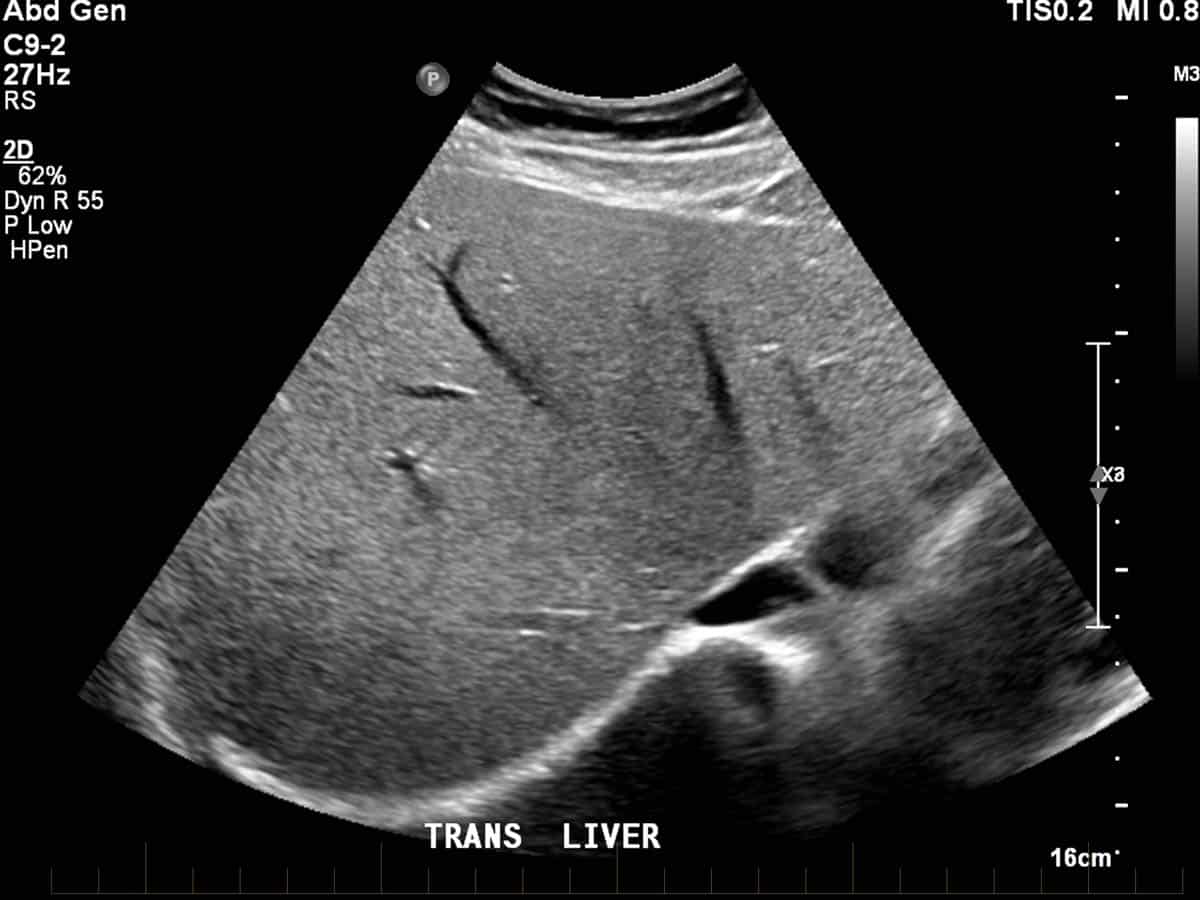
Liver ultrasound
Ultrasound of the liver in Nagpur The ultrasound of the liver can tell a lot about your liver’s condition. Doctors may order liver ultrasonography for monitoring cases and conditions or lesions in the liver. It is possible to stage chronic liver disease and monitor the response to the treatment. Sometimes, an ultrasound is enough to the make or rule out a diagnosis. Sometimes it leads to further tests.
A healthcare provider may order the liver ultrasound if you have symptoms of liver disease or if you have results from another type of test that indicate liver disease. Ultrasound offer the quick or easy way for your provider to the investigate these findings. If you have already been diagnosed with the liver disease, your provider might also order a liver ultrasound for determining the extent to which it affects your liver.
1. Preparation: No special preparation is required
2. Position: Lay on your back; lie down exposing the abdomen.
3. Transducer placement: A probe (transducer) is placed over your abdomen, above the liver.
4. Imaging: The procedure wherein the transducer sends or receives sound waves and produces images on a monitor.
5. Doppler assessment: Assesses the flow of blood inside the liver and its neighboring tissues
6. Image interpretation: The sonographer or radiologist shall interpret the images and measurements taken in the process.
7. Reporting: A report is generated, containing the results and the recommendations.
Liver ultrasound is especially applied in:
1. Evaluation of liver function and anatomy
2. Detection of conditions and diseases of the liver
3. Guidance for biopsy or other interventional procedures
4. Follow-up of patients after a liver transplant
5. evaluation of patients at high risk for any potential liver abnormalities
What Is a Liver ultrasound?
A liver ultrasound, also called an abdominal ultrasound, is a non-invasive radiology test using high-frequency sound waves to produce images of the liver and surrounding tissues. It is a painless and radiation-free test meant to diagnose and monitor several disorders related to the liver.
During a liver ultrasound, a transducer is placed over the abdominal region that has the liver. It sends and receives the sound waves, while images of the liver and its surrounding tissues appear on the monitor.
Liver Ultrasound Uses
Liver ultrasound is used in:
– Checking for functional and anatomic liver defects.
– Detecting diseases or abnormalities in the liver
– Guides biopsies or other interventional procedures
– Monitoring patients with liver transplants
– Detecting potential liver problems in patients at risk.
Some of the conditions diagnosed by using liver ultrasound include the following:
– Cirrhosis of the liver
– Liver cancer
– Cysts or abscesses in the liver
– Liver fatty disease
– Liver inflammation
– Liver damage
– Gallstones, or obstruction in the bile ducts
– Portal hypertension
Liver ultrasound is one of the useful tools healthcare providers can use in evaluating and managing liver-related conditions.
Reasons for a Liver Ultrasound:
- Fatty liver disease: To assess the presence of fat accumulation in the liver (non-alcoholic fatty liver disease).
- Liver cirrhosis: To check for scarring of liver tissue due to chronic liver disease.
- Liver tumors or cysts: To detect benign or malignant growths, including liver cancer or cysts.
- Liver infections: To evaluate the liver for infections such as hepatitis.
- Liver size and shape: To monitor for any enlargement (hepatomegaly) or abnormalities in the liver structure.
- Blood flow to the liver: A Doppler ultrasound can be used to assess blood flow to and from the liver.
- Ascites: To detect fluid buildup in the abdomen, which can occur in advanced liver disease.
- Jaundice: To help determine the cause of jaundice, which may be related to liver or bile duct problems.
Procedure:
- The patient lies on their back with a abdomen exposed.
- A gel is applied to the skin over the liver area (right upper quadrant of the abdomen).
- A transducer is moved over the area, sending sound waves that reflect off the liver to create real-time images.
- The procedure is painless and typically takes 15-30 minutes.
Advantages:
- No radiation: It is a safe procedure that doesn’t involve radiation.
- Non-invasive or painless: There is no discomfort or the downtime associated with the test.
- Useful for monitoring chronic conditions: Ideal for people with liver disease to track changes over time.
What is procedures of Liver ultrasound?
Liver Ultrasound Steps include:-
1. Preparation:- There is no special preparation
Wear loose-fitting clothes which allows an easy access to the abdomen
2. Positioning:
A pillow and pad may be used under the back to a provide adequate support
3. Transducer placement:
Small probe (transducer) is applied to your abdomen, towards the region where liver lies
Gel or oil may be applied to the skin for better quality images.
4. Imaging:
– The transducer transmits and receives ultrasonic waves, which render images in a monitor
The sonographer is allowed to scan using the transducer in any angle to obtain images
5. Doppler evaluation
Essentially measures the flow of blood in the liver and other surrounding tissues
6. Image interpretation
The sonographer or radiologist analyzes the images and measurements
7. Reporting
A report is developed with findings and recommendations
8. Additional procedures if needed
– Fine needle aspiration biopsy
Liver elastography (fibroscan)
9. After procedure
-You would be able to resume your normal activity immediately.
At our Neurosys Multispeciality Center, we perform several key procedures including Craniotomy, which is primarily for the excision of brain tumors; V-P Shunt Surgery for treating hydrocephalus; surgeries for epilepsy; and operations targeting brain stem glioma. Beyond these, we offer a range of other neurosurgical services. If you have any questions that are not answere, please contact us through our Contact Us or Book your Appointment.
